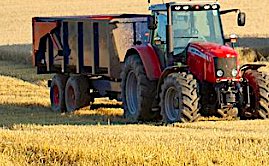Average farm income in Scotland is estimated to have been £50,000 in 2021-22 — an increase of over £11,000 on the previous year against the backdrop of the pandemic and Brexit.
Scotland’s Chief Statistician released figures on 2021-22 farm incomes that show average income rising to its highest level since 2012, after adjusting for inflation.
The results show that commercial dairy farms had a good year — driven mainly by increased milk prices — with average income estimated at £162,100, its highest value since 2012.
Average cereal farm income also reached a record high at £84,600, driven by high wheat and barley output.
“For the first time in at least ten years, the average farm would have been profitable without support payments,” said the Scottish Government.
“With support payments excluded, the average farm business made a profit of £5,100 from agricultural, contracting and diversified activities.
“This was mostly driven by increases in income in dairy and arable farms.
“Across all farm types, 56% of farms would have made a loss in 2021‑22 without support.
“Support payments are a key source of revenue for many livestock farms, especially those in less favoured areas (LFA).
“Current support payments are intended to allow farms to remain in business and be an active part of their local community.”
Total input costs increased 6% to £225,200 for the average Scottish farm.
The results are calculated from the 2021-22 Farm Business Survey, which covered the 2021 cropping year and the 2021-22 financial year.
The Farm Business Survey is an annual survey of approximately 400 commercial farms with economic activity of at least approximately £20,000. Farms that do not receive support payments, such as pigs, poultry and horticulture, are not included in the survey.
